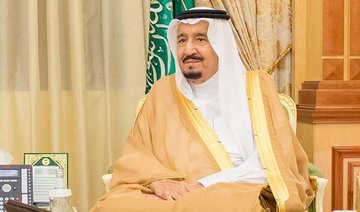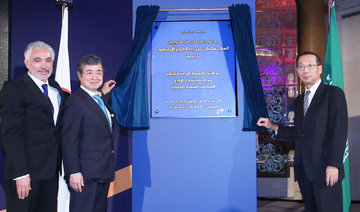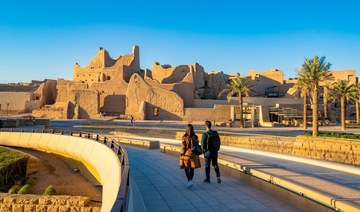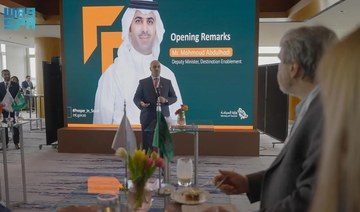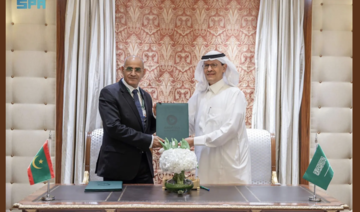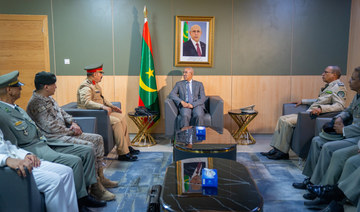JEDDAH: Abused Saudi women continue to be reluctant to report to authorities that they are physically abused because they fear breaking up their home and risking the safety of their children.
As little as 1 percent of Saudi women report that they are victims of domestic violence and plan to seek help from social services, according to a recent study published by Dr. Waffah Fageeh, with the Department of Obstetrics and Gynecology at King Abduaziz University Hospital in Jeddah.
Fegeeh’s study polled Saudi women in 2011-2012 and was published in January, but women continue to shun services because the entire family could suffer. And domestic abuse cases continue to rise.
A new National Society for Human Rights (NSHR) report revealed that it received 366 cases of domestic violence against women in 2016, up from 295 in 2015. Child abuse cases increased from 154 in 2015 to 188 in 2016.
Munira Al-Jwiri, a Riyadh lawyer, told Arab News that, “Family disintegration and divorce are among the crucial reasons why women fear reporting their cases.”
Although domestic violence is a common problem among women in Jeddah, only a negligible proportion of women plan to seek help. Policy makers should therefore improve social support services to encourage and cater for the needs of abused women, according to women’s rights advocates interviewed by Arab News.
“Some ladies accept whatever violence they face from their spouses and do not report it according to their religious beliefs and culture,” Fegeeh told Arab News.
“Ladies used to write comments below the questionnaire paper asking if there are places for them to use as shelters, which shows that there is a lack of awareness regarding the places to go,” she added.
She also said that most women refuse to ask for help from people outside the family because they fear being belittled and that their families may not accept them when they return home.
The World Health Organization (WHO) reported that about one in three women worldwide have experienced either physical and or sexual intimate partner violence or non-partner sexual violence in their lifetime.
The NSHR reported that it has received thousands of complaints of domestic violence in the past 10 years. These complaints included physical, sexual, financial and psychological abuse.
The plight of victims of domestic abuse is exacerbated by the low level of awareness of shelters, or protection homes. Further, at least one home protection home is not operating at capacity.
Al-Madinah Daily reported that Saeed bin Khalaf Al-Ghamdi, deputy director general of the Labor Ministry, said recently that, “the ministry’s Social Protection Home in Jeddah is empty of inmates for the first time in eight years.”
Al-Ghamdi attributed this to the increased level of awareness in society as well as the increased efforts exerted by the home’s officials.
However, Fageeh said an empty women’s shelter is not necessarily a good sign in a city of more than 3 million people.
“Having an empty protection home can not be a sign for the success of the awareness campaign,” Fageeh said.
Protection houses provide safety for victims who must be protected via a rehabilitation plan to offer the most suitable solutions.
Khalid Abalkhail, spokesman for the Ministry of Labor and Social Development, said victims of domestic abuse must meet specific criteria before admission.
“The home doesn’t receive any cases unless (the victim) has been exposed to a strong physical abuse that was medically proved,” he said.
Fegeeh said Saudi women rather sacrifice their personal well being to ensure the safety of their children. “Women prefer not to report their cases because they have no other shelters but their bad husband’s homes,” she said.
Although rehabilitation is offered to abuse victims from protection homes, some women refuse to go back home even when their problems are solved.
“Saudi women can make use of the social insurance disbursed of financial dues to have a private shelter,” Al-Jwiri said. “They can use it as their private income.”
Yet protection of women in shelters is restrictive. Protection houses limit a woman’s stay at the shelter for only three days. Their domestic issues must be resolved, including the guardian signing a pledge to stop the abuse, and the woman is returned home, according to Suhaila Zain Al-Abideen, a senior member of the NSHR.
But the Labor Ministry’s Abalkhail said the three-day time period could be extended. “The team sets a plan to solve the problem within the time determined, including making sure that no violence will occur again to these abused individuals,” he said.
These homes are temporary residences for abused women of any age and children under 18 years old. The homes provide temporary shelter, reform and social and psychological rehabilitation.
Jeddah abused-girls protection home stands empty
Jeddah abused-girls protection home stands empty

Man arrested in Jazan for transporting 10 illegal migrants

- Saudi border guard land patrols also foiled an attempt to smuggle 30 kg of hashish into Al-Raboah, Asir
RIYADH: Al-Afwaj security patrols in Al-Arida, Jazan, arrested a Saudi citizen for transporting in 10 Ethiopians, who illegally crossed the Kingdom’s border in his vehicle.
The 10 Ethiopians were referred to the relevant authorities and, subsequently, to the Public Prosecution.
Media spokesperson of the Ministry of Interior’s Al-Afwaj Regiment said that anyone found to be facilitating illegal entry to the Kingdom, including providing transportation and shelter, could face imprisonment for a maximum of 15 years, a fine of up to SR1 million ($260,000), as well as confiscation of vehicles and property.
Meanwhile, Saudi border guard land patrols in Al-Raboah, Asir, foiled an attempt to smuggle 30 kg of hashish.
Preliminary legal procedures have been completed, and the seized items were handed over to the relevant authority.
Elsewhere, Saudi Border Guard land patrols in Al-Aridah, Jazan, foiled an attempt to smuggle 140 kg of qat. Preliminary legal procedures have been completed, and the seized items were handed over to the relevant authorities.
Patrols of the General Administration of Mujahideen in the Eastern Province arrested a citizen for selling amphetamines.
Citizens and residents with information on drug smuggling or trafficking A few asked to call 911 in Makkah, Riyadh and the Eastern Province, and 999 in the rest of the Kingdom. They can also contact the General Directorate of Narcotics Control at 995 or email: [email protected]. All reports are treated confidentially.
Saudi Red Sea Authority issues marina licenses

RIYADH: The Saudi Red Sea Authority has issued licenses for three tourist marinas: Al-Ahlam Marina in Jeddah and Jazan, and the Red Sea Marina in Jeddah.
The authority is issuing licenses to regulate marine tourism in an effort to achieve the goals of the Kingdom’s Vision 2030 in building the coastal tourism sector.
In regulating the operation of marinas, the authority can improve the quality of services provided to tourists and visitors, and preserve and sustain the marine environment.
Regular field visits are carried out by the authority to tourist marinas in Jeddah, Jazan, Al-Lith and Yanbu, to provide technical and consultative support.
Marina operators must ensure compliance with international standards to receive a license from the authority.
Saudi Red Sea Authority began its journey toward building and regulating the coastal tourism sector in 2021, with the objective of enhancing integration among relevant entities by issuing licenses and permits, and formulating essential policies and strategies, assessing infrastructure requirements, preserving the marine environment, attracting investments, and fostering navigational and marine tourism activities.
How a Saudi healthcare startup is using AI to transform the diagnosis of chronic diseases

- The work of SDM highlights the impact AI can have on the accessibility and increased accuracy of diagnostics
- The firm has already served more than 30,000 patients over the last two years at clinics across Saudi Arabia
RIYADH: Healthcare startup SDM is using artificial intelligence to make healthcare efficient, accessible and potentially life-saving by detecting the stages of chronic diseases such as diabetes through retinal imaging analysis of the eye.
“When you hear the phrase ‘your eye is a window to your body,’ it’s actually the retina that is the window to any systemic diseases,” Dr. Selwa Al-Hazzaa, CEO and founder of SDM, told Arab News.
Since launching in 2018, SDM has worked on filling the gaps in the health sector as a developer of digital technology solutions to promote well-being and accessibility in remote communities across the Kingdom and beyond.
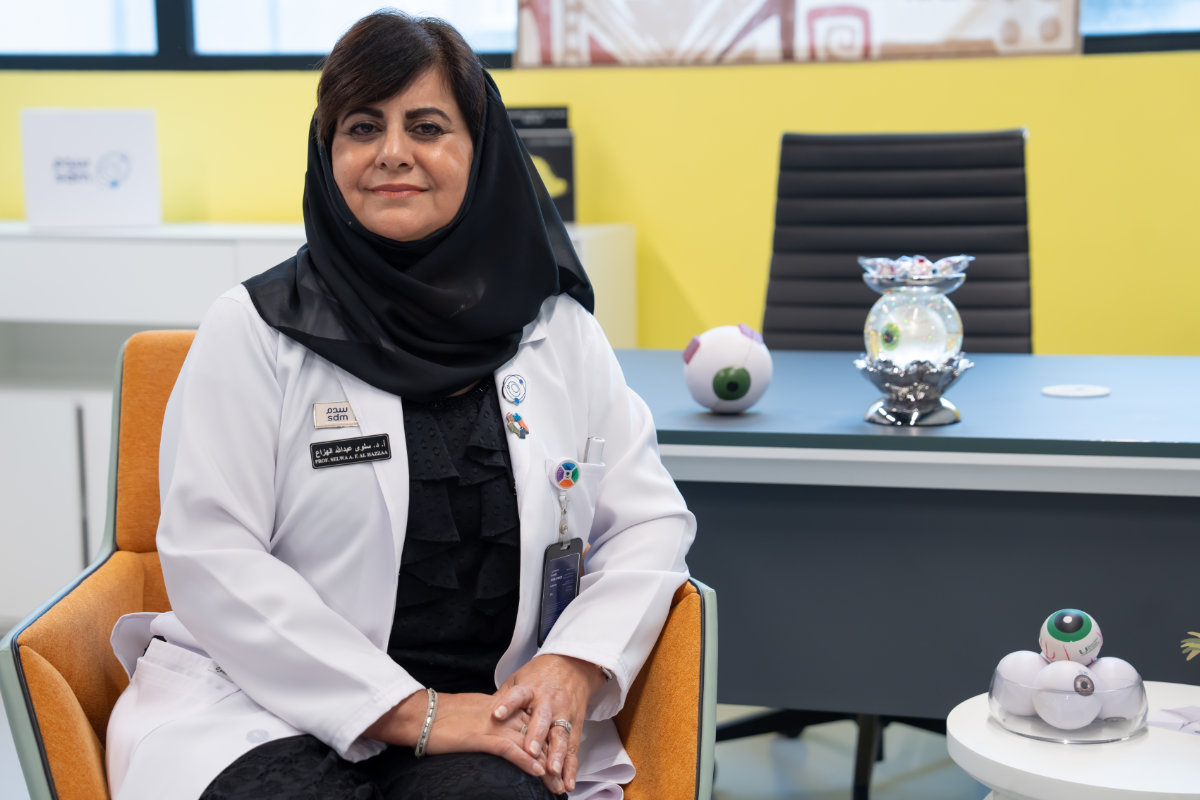
Al-Hazzaa, along with her co-founder and managing director, Naif Al-Obaidallah, have had a longstanding passion for making healthcare accessible and low-cost, with the belief that “everyone should have access to healthcare.”
Al-Obaidallah told Arab News: “Everyone should have a right to see a doctor or get treated.”
A trailblazer in the field of AI medicine, SDM combines AI technology with Al-Hazzaa’s 40 years of experience, partnering with nonprofits to carry out a comprehensive mass detection of chronic diseases through the retina.
“I had a dream that I wanted patients to be examined and get good quality care without actually coming to Selwa Al-Hazzaa in a specialized hospital,” she said. “I kept asking myself: Why can’t I take my experience, put it in a package, and give it to the community?
“By the time many patients come to me, it’s already too late and they’re blind. There had to be a way that I could reach the community. And this was when SDM was born.”
The result was an accessible and automated healthcare service that does not require physicians to be on site, thereby reaching tens of thousands of people across the Kingdom.
The World Health Organization estimates there are 7 million diabetics in Saudi Arabia. Within the region, eye disease is the main cause of blindness and 10-12 percent of the population in Saudi Arabia with diabetic eye disease go blind if the condition is not treated.
Only an estimated 24 percent of patients have been screened for diabetic eye disease in Saudi Arabia, while 76 percent remain unexamined.
The work SDM is doing highlights the impact AI can have on healthcare and the mass outreach of health diagnostics at reduced cost and increased accuracy. SDM has already served more than 30,000 patients in more than 13 centers around the Kingdom over the last two years.
“Our focuses are specifically on rural areas, places that don’t have access to highly specialized doctors,” said Al-Obaidallah. “In a given day, sometimes we’ve seen over 150 patients. And that’s all using AI and deep learning. It’s a very trusted way of diagnosing.”
SDM has benefited from the support of “success partners” at NEOM, the Ministry of Communication and Information Technology, the King Abdullah University of Science and Technology, Saudi Telecom, Al-Faisal University and business incubator “The Garage.”
In order to grasp the revolutionary impact of what SDM is doing, it is necessary to understand how disease detection is traditionally conducted.
At the Kingdom’s diabetic centers, patients are typically seen by pathologists, endocrinologists, cardiologists and podiatrists. However, patients do not usually see ophthalmologists, who are technically surgeons and found in hospitals.
As a result, eye disease screening is often overlooked, potentially leading to complications down the line.
“The patient traditionally would only be sent to take the photo of the retina if they complained. But the symptoms only come in diabetes in the late stages,” said Al-Hazzaa.
“They would save the photos until the ophthalmologist came to visit, which would be maybe once a month or twice a month, depending on the collaboration with the ophthalmology clinics.”
Opinion
This section contains relevant reference points, placed in (Opinion field)
Unlike traditional healthcare methods, SDM has developed technology to make detection automated, instant and seamless with results reaching the patient in a matter of minutes, clearing obstacles to treatment.
When a patient comes into an SDM clinic, a trained technician photographs the back of their eye using a specialized instrument called a fundus camera. The image is then sent via a secure cloud for AI diagnostics.
“Within minutes, the report comes out either in English, which is then integrated for the doctor, and in Arabic, where the patient is actually given the PDF report in his or her hand,” said Al-Hazzaa.
“It is totally run by technicians, photographers, nurses, even primary care physicians — all these healthcare personnel, who have no experience whatsoever with eye diseases.”
Al-Hazzaa underlined the ease this technology provides for patients, healthcare providers who are taking the photos and the endocrinologists who see the patients following the examination.
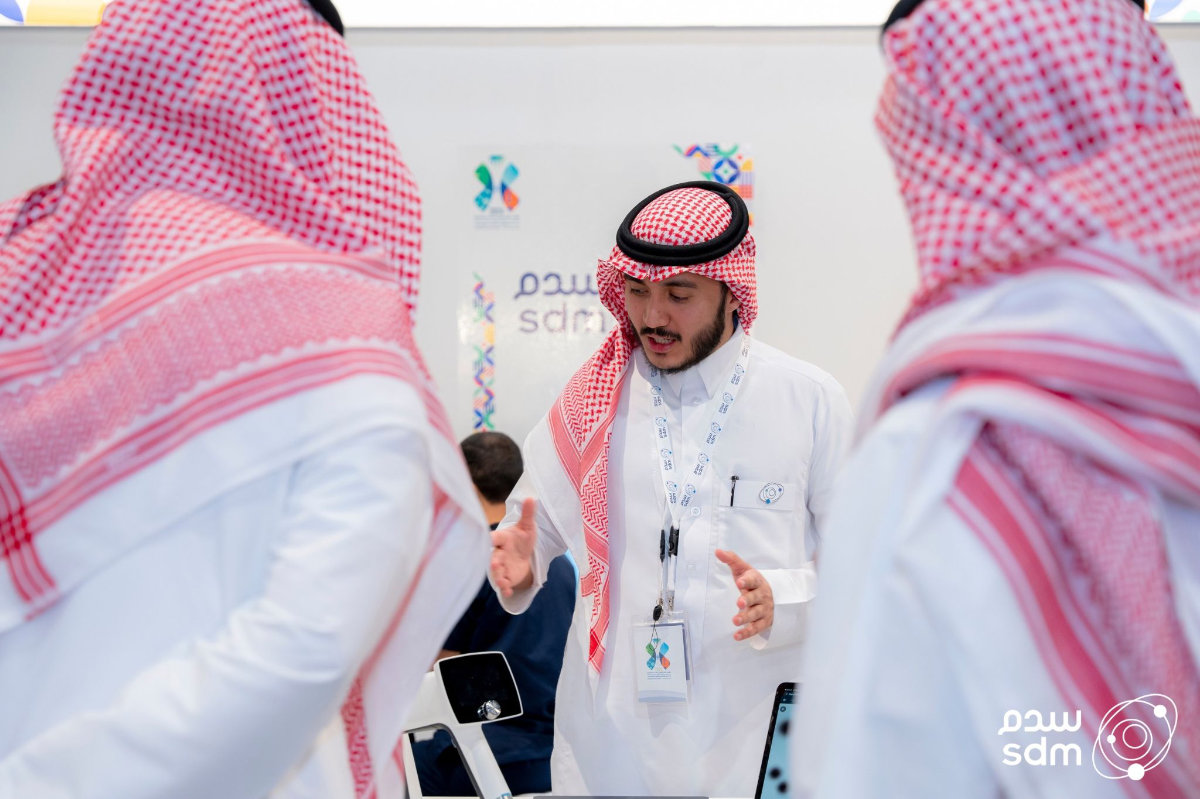
In terms of accuracy, Al-Hazzaa said the technology outperforms even the most experienced physicians in detecting problems.
“I can tell you the algorithmic solution is now much more sensitive than me,” she said. “The best I could do was 93 percent. The AI solution has actually reached over 95 percent.
“The unique thing is, not only are you using automation, which is convenient for the patient, convenient for the healthcare provider, but you’re also introducing automation at a sensitivity that is much greater than your board-certified retinologist, not just ophthalmologist.”
Like workers across many sectors, the uptake of AI tools among physicians has been slow to catch on, as many fear that mass adoption could ultimately cost jobs.
“They thought: ‘Here’s a machine that’s much more accurate than us, that’s faster than us, and it’s going to take our place.’ They were very reluctant,” said Al-Hazzaa.
“After one year of being in the diabetic center, the ophthalmologist actually came back to me and said: ‘Dr. Selwa, thank you. You improved our surgical skills because you have taken all the routine repetitive exams that we are no longer interested in’.”
Diabetic eye disease is not the only condition SDM is able to detect through the AI analysis of retinal imaging.
“With the picture of the retina, which is the back of the eye, you can detect at least 20 diseases,” said Al-Obaidallah.
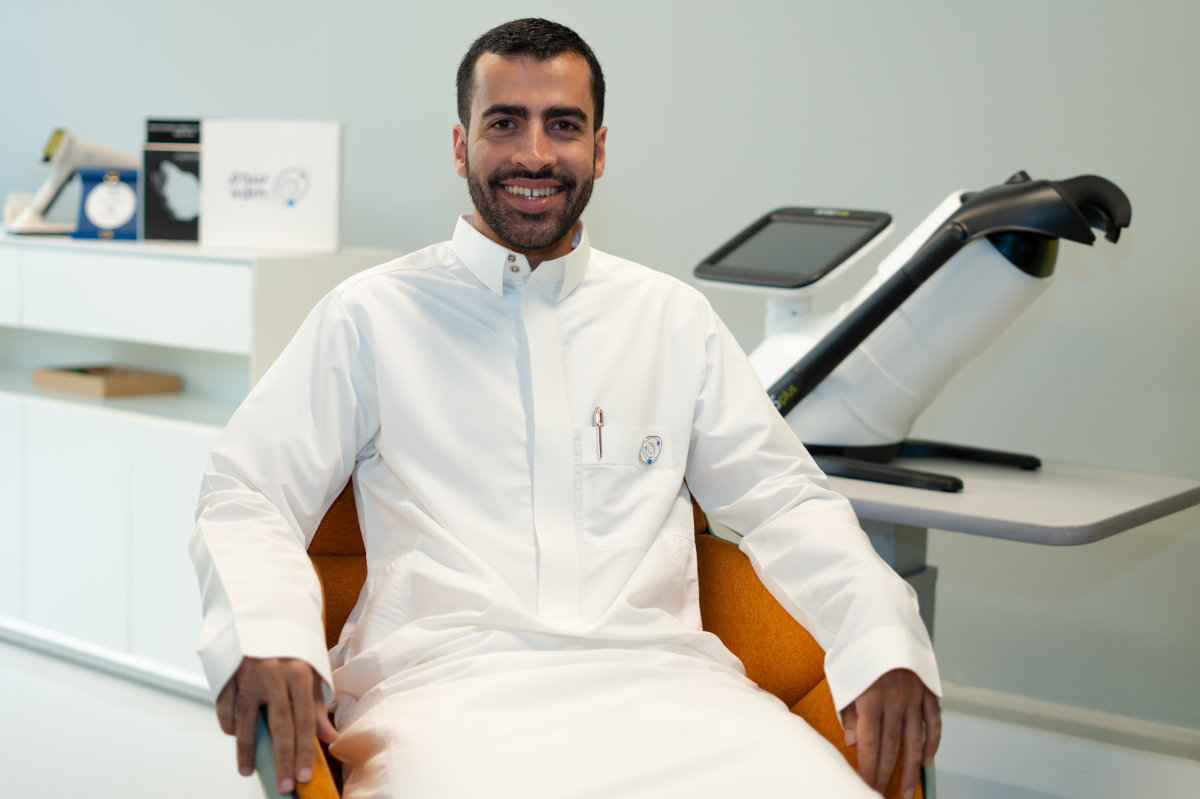
“We’re working on a lot of other diseases, whether it is glaucoma, hypertension, Alzheimer’s, which can be diagnosed and detected with a picture of your eye. It’s mind-boggling to see how the eyes can basically tell you everything about your body. And it’s done in a very basic way. There is no surgery needed.”
As part of its mission to make healthcare more accessible, SDM is working with a mobile diagnostics center in Madinah to reach patients in rural areas.
After some initial delay in securing regulatory approval, SDM’s innovative technology has since rapidly advanced.
“Artificial intelligence as a whole, maybe in some industries, it’s there and it’s in use,” said Al-Obaidallah. “But in healthcare, it’s still fairly new. So, when we work on something, we’re basically paving the way.
“We worked with the Council of Health Insurance on coding, the use of artificial intelligence in healthcare, specifically, in our exam, in our product.
“We were basically the first company to work with the CHI on the new Saudi billing system, to introduce artificial intelligence as a billing code for hospitals and insurance companies to use.”
However, all of SDM’s services are provided free of charge in partnership with nonprofits.
“Everything is free. No one pays anything,” said Al-Obaidallah. “Our goal is for patients to have the right to diagnosis of chronic diseases.”
Beyond diagnostics, SDM also recently announced new software utilizing generative AI. “It’s basically a large language model, an LLM, which is a very hot topic,” said Al-Obaidallah.
“Recently, everyone’s been talking about generative AI. So, we’ve worked on a generative AI model that is more of a chatbot that you ask any question related to diabetes. And it would basically give you an answer.
“We’ve been feeding it with journals, publications, specifically, chosen by experts in the field to make sure that this gives you clear and straight answers.”
Looking five years into the future, Al-Hazzaa hopes to move from predictive AI to generative AI using LLMs.
“I know with confidence that SDM will not only be treating diabetic diseases, but we will be going into other chronic diseases such as predicting hypertension, stroke and Alzheimer’s,” she said.
“We will also be looking into other chronic ophthalmology diseases such as glaucoma, such as age-related macular degeneration.”

Innovators challenged to improve pilgrim experience for people with mobility issues

- During a week-long event, 250 people on 39 teams are working to develop innovative products and services to serve the mobility needs of pilgrims
MAKKAH: Innovators and entrepreneurs have been challenged to find ways to enhance the pilgrim experience in Makkah for people with mobility issues.
To help them develop solutions, provide support and encourage collaborations, the General Authority for the Affairs of the Grand Mosque and the Prophet’s Mosque, Umm Al-Qura University and investment business Wadi Makkah Co. organized a week-long event that began at the company’s headquarters on Sunday.
The specific goal is to improve pilgrim services through the development of innovative ways to help people who find it difficult to complete Hajj rituals such as Tawaf (walking around the Kaaba in the Grand Mosque seven times) and Sa’i (moving repeatedly between the Safa and Marwah hills at the mosque). The challenge includes four categories covering the use of manual wheelchairs, electric vehicles, golf carts and trailers, and a fifth, open section for creative mobility ideas.
Ali Al-Shaery, the CEO of Wadi Makkah, said he was proud of the company’s participation in this collaborative effort, and highlighted the significant role it can play in improving pilgrims’ mobility.
“We are contributing to realizing the Vision of our beloved kingdom, enriching the experience of pilgrims, and increasing the number of pilgrims and Umrah performers by 2030,” he said.
“Through this challenge, we aim to provide participants with a knowledge boost, cultural enrichment and empowerment through specialized workshops and expert mentors.”
The general authority is giving participants a sense of the nature of pilgrim-mobility issues, he added, while mentors from Wadi Makkah are providing technical, innovative and entrepreneurial knowledge.
A panel of judges from various sectors related to Hajj and Umrah will select the most promising solutions proposed during the event, Al-Shaery said.
Ammar Attar, a faculty member at Umm Al-Qura University and coordinator of the mobility vehicles category of the challenge, said it was important to engage the academic community in efforts to tackle real-world issues.
“We aim to activate the role of faculty members, students and researchers in designing creative and innovative solutions that enrich the Tawaf and Sa’i experience,” he said.
He added that 250 people on 39 teams are working with the best tools to develop innovative products and services that can best serve the needs of pilgrims.
Ahmed Morsi, an entrepreneurship projects engineer with Wadi Makkah, said participants in the challenge have been provided with the tools they need to help come up with ideas that can significantly improve the pilgrim experience through the use of manual and electric wheelchairs, golf carts and trailers.
“Mentors have been provided to offer guidance and advice during the challenge period in developing ideas, designing products and building the first model, with the aim of assisting innovators, entrepreneurs and the Makkah community in creating a conducive environment and providing all essentials for achieving success stories that enhance the experience of pilgrims and Umrah performers,” Morsi added.
Prizes of SR10,000 ($2,666) will be awarded to the best projects chosen by judges in each of the five categories.
Mauritania president arrives in Madinah to visit Prophet’s Mosque

- The president will pray in the mosque and pay his respects to Prophet Muhammad and his companions Abu Bakr and Umar
RIYADH: The President of Mauritania Mohamed Ould Ghazouani and his accompanying delegation arrived in Madinah to visit the Prophet’s Mosque on Thursday.
The president will pray in the mosque and pay his respects to Prophet Muhammad and his companions Abu Bakr and Umar.
Earlier on Thursday, Ghazouani attended an Arab League summit in Bahrain.


